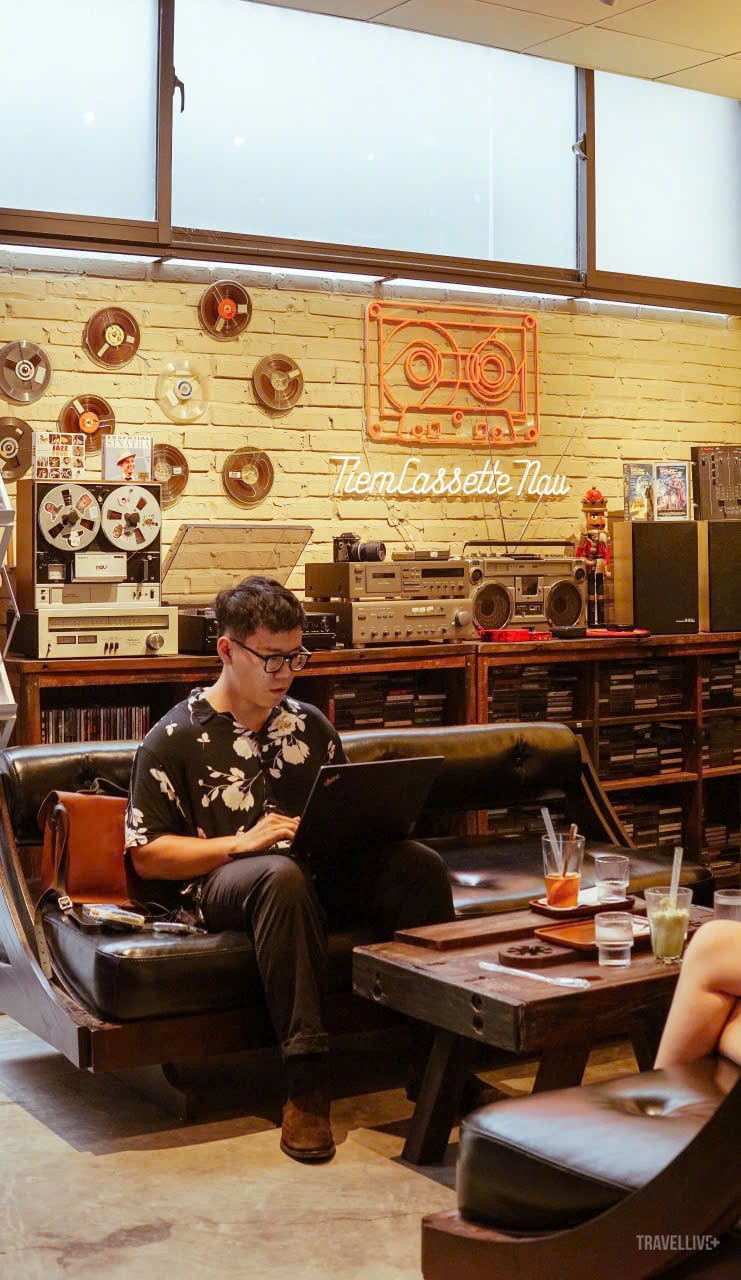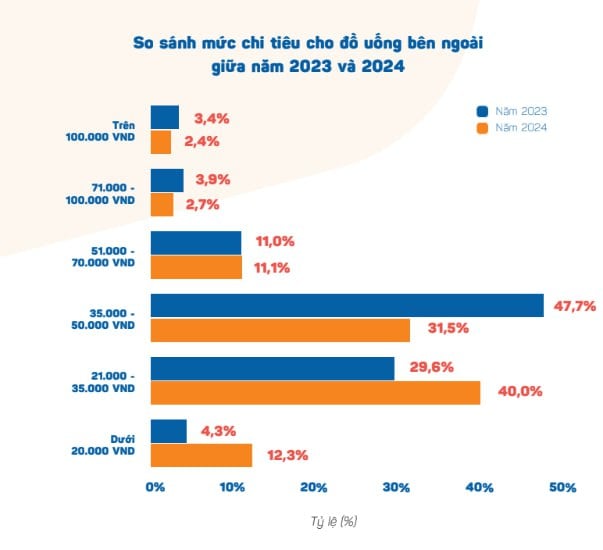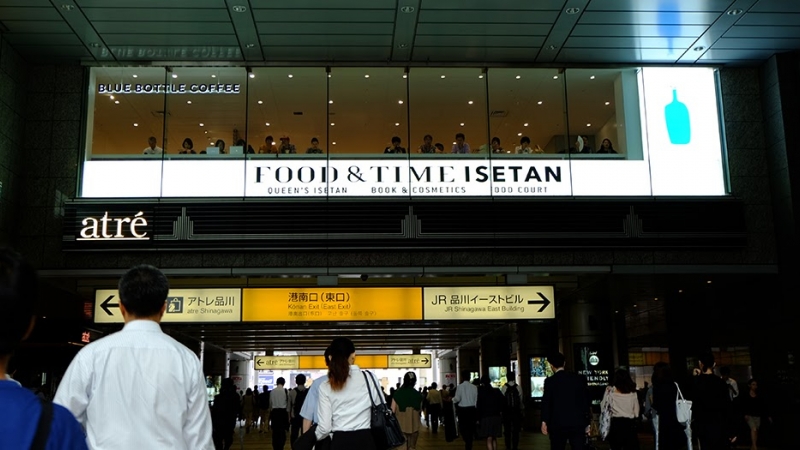The year 2024 will witness a strong boom in the Vietnamese beverage industry, when on average, Vietnamese people spend an impressive amount of more than 320 billion VND per day on coffee and milk tea, two drinks that have become symbols of modern lifestyle.

In 2024, the Vietnamese beverage industry recorded a memorable milestone.
The Vietnam Food and Beverage Market Report 2024, published by iPOS and Nestlé Professional, revealed impressive figures on the strong growth of the beverage industry. Accordingly, revenue from beverage stores nationwide is estimated at VND 118,262 billion, a spectacular growth of 13% over the previous year, a clear demonstration of the irresistible appeal of this market.

Young people choose coffee shops as a "co-working space"
This figure is equivalent to the Vietnamese beverage industry earning more than 323 billion VND per day, an astonishing figure, showing a strong increase in consumer spending on beverages. This is also the highest revenue recorded in the period from 2018 to 2024, affirming the sustainable development and great potential of the industry.
iPOS’s report also shows that the trend of consuming drinks outside is becoming more and more popular. Currently, up to 51% of consumers maintain the frequency of using drinks outside at a regular level or more, showing a change in Vietnamese consumption habits, as they increasingly prefer ready-made drinks at stores.

Coffee and milk tea are not only favorite drinks of Vietnamese people but also potential industries with huge revenue.
In particular, the proportion of people drinking out of home daily (including going to the restaurant, ordering delivery or taking away) has skyrocketed from 6.1% in 2023 to 18.2% in 2024, a significant increase, indicating a change in people's lifestyle and habits, as they become increasingly busy and prefer convenience. The group of customers with a frequency of use of 3-4 times/week also increased from 17.4% to 32.8%, confirming the increase in the frequency of consuming out of home drinks.
Previously, a report by Mibrand Vietnam also pointed out that the group of people with an income of 5-10 million VND/month has the highest frequency of going to coffee shops, usually 1-3 times/week, followed by the group with an income of 10-20 million VND/month. Most of the customers in these two groups are office workers, freelancers and students, who see coffee and other drinks not only as refreshments, but also as a means to connect, work and study.

Notably, the frequency of Vietnamese people drinking coffee has also changed dramatically.
The significant increase in the frequency of coffee and milk tea consumption has opened a new era for the Vietnamese beverage market, promising strong development opportunities in the coming years. This is a fertile land, not only for big brands with strong financial potential, but also a golden opportunity for small shops, passionate and creative people in this field.

This opens up great opportunities for F&B brands but also poses difficult problems in pricing, business strategy and customer experience.
However, the road to success is not paved with roses. Competition in the beverage market is becoming increasingly fierce, as consumers are becoming more and more demanding in choosing products. They are not only looking for delicious drinks, but also care about reasonable prices that fit their budget. This leads to a shift in consumer trends, as consumers start to look for affordable and mid-range options, instead of expensive, high-end products.

The F&B market in general and the coffee and milk tea industry in particular are still full of potential, but are no longer an easy playground.
This poses a difficult problem for brands in the beverage industry. How to balance product quality, customer experience and reasonable prices to maintain a competitive advantage? This is the question that businesses need to find the answer to if they want to survive and develop in this challenging market.
iPOS’s report has shown that focusing on the low-end and mid-range segments, while still ensuring product quality and customer experience, is the key to success in today’s beverage market. Brands need to listen to customer opinions, research the market and come up with appropriate strategies to meet the increasingly diverse and demanding needs of consumers.




































